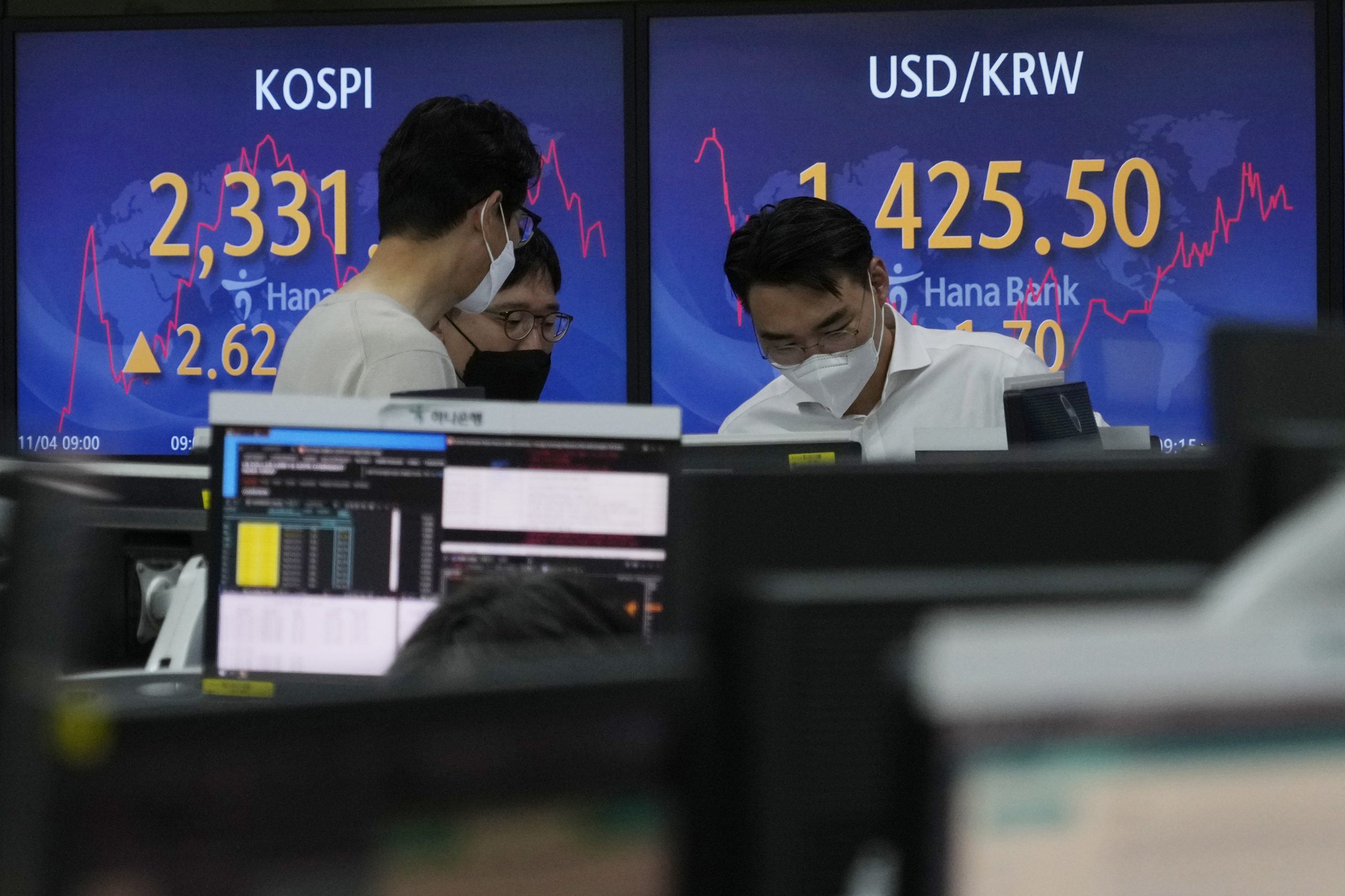NEW YORK (AP) — Stocks rallied Friday, but only after yo-yoing several times, as Wall Street struggled with what to make of the latest reading on the U.S. jobs market and what it means for interest rates and the odds of a recession.
The S&P 500 climbed 1.4% after seeing an even bigger rally from the morning disappear completely, only to recover at the end of the day. The Dow Jones Industrial Average rose 1.3% after veering from a gain of 610 points to a loss of 62, while the Nasdaq composite added 1.3%.
The latest set of gyrations in what’s already been a wild year for markets followed a U.S. government report showing the unemployment rate ticked higher in October, employers added fewer jobs than they had a month earlier and gains for workers’ wages slowed a touch.
Stocks initially rallied as the data offered some hope that the Federal Reserve’s efforts to weaken the jobs market may be taking effect and may help lower the nation’s high inflation. But the slowdown was still more modest than economists expected. And it changed few minds about what’s going to happen next: The Fed will keep hiking rates toward levels rarely seen this millennium, clamping the brakes tighter on the economy and dragging on prices for stocks and other investments.
Such fears helped send the S&P 500 to its first weekly loss in the last three, despite Friday’s gain of 50.66 points to 3,770.55. The Dow rose 401.97 Friday to 32,403.22, and the Nasdaq climbed 132.31 to 10,475.25, though both also finished with losses for the week.
While Wall Street chewed over the jobs report, markets around the world bounced higher amid continued speculation that China may relax its zero-COVID strategy and invigorate what’s long been a major source of growth for the global economy.
Earlier this week, Fed Chair Jerome Powell called out a still-hot jobs market as one of the reasons the central bank may ultimately have to raise rates higher than earlier thought. Such moves could cause a recession, and it’s why investors came into Friday with such anticipation for the U.S. government’s monthly jobs report.
On the bright side for markets, some analysts pointed to the slight increase in the unemployment rate to 3.7% during October. That raised the possibility that September’s 3.5% rate may prove to be the bottom. Big tech companies like Amazon have recently announced hiring freezes or even layoffs to stay in step with what they see as a weakening economy. That could keep the job market out of a feared “wage-price spiral,” where a tight jobs market sends wages so high that it feeds into even higher inflation.
Other analysts, though, focused on the still-solid jobs market where hiring continues to top expectations. If anything, Friday’s stronger-than-forecast jobs data likely means “Fed officials are going to have to step on the brakes even harder to slow this economy and bring inflation under control,” according to Russell Price, Ameriprise chief economist.
Several investors and banks raised their expectations Friday for how high the Fed will ultimately take short-term interest rates next year, with many eyeing something above 5%. That’s a level the economy has experienced only rarely in the last two decades and a big jolt for the federal funds rate after it began this year at virtually zero.
At fund behemoth Vanguard, the investment strategy group said all of Friday’s data on jobs together offers “nothing to change Vanguard’s Fed expectations” and only increases the focus on next week’s update for how bad inflation was across the country in October.
Markets around the world wobbled in the minutes immediately following the release of the U.S. jobs data. The yield on the two-year Treasury, which tends to track expectations for action by the Fed, jerked up and down a few times before eventually easing.
Markets elsewhere had been buoyed earlier on hopes that China may soon relax anti-COVID policies that have sometimes caused entire cities to be locked down for weeks. Such a move could give a boost to the global economy when worries are high about recessions around the world because of aggressive rate hikes by central banks from the Americas to New Zealand.
Stocks in Hong Kong surged 5.4% Friday, while stocks in Shanghai jumped 2.4%. Both markets finished the week with strong gains.
The price of copper also climbed roughly 7%. A stronger Chinese economy would devour more raw materials, and shares of miner Freeport-McMoRan soared 11.5% for the biggest gain in the S&P 500.
Two casino companies that get much of their revenue from the gambling center of Macao on the southern coast of China were also among Wall Street’s stronger stocks. Las Vegas Sands climbed 6.3%, and Wynn Resorts added 6.5%.
The yield on the two-year Treasury fell to 4.68% from 4.72% late Thursday. The 10-year yield, which helps dictate rates for mortgages and other loans, edged higher to 4.16% from 4.15%.
___
AP Business Writers Yuri Kageyama and Matt Ott contributed.

